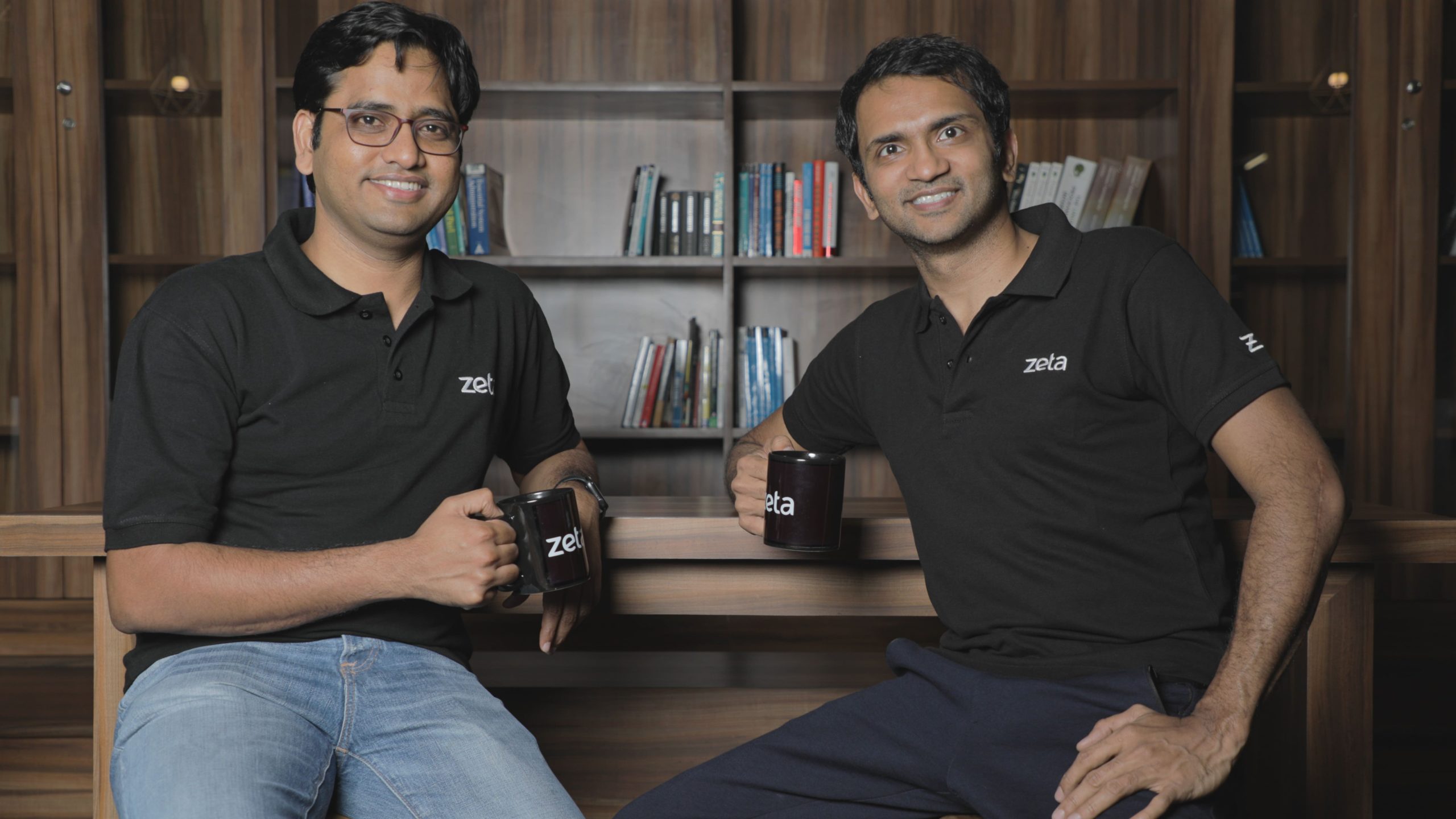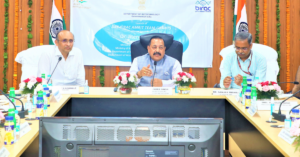Most ‘serial entrepreneurs’ in India today are people who have just set up their second company. But Bhavin Turakhia is a class apart. He has founded and exited a string of technology companies, including Directi, Media.net, LogicBoxes, CodeChef and a few more, in the past two decades.
All these were bootstrapped companies that he had built with his brother Divyank and selling them made the duo rich. The Turakhia brothers have been a constant fixture in the Forbes India list of 100 richest Indians since 2016 (although they were dropped in 2020).
While Diyank Turakhia has taken a break from setting up companies for the past couple of years, Bhavin continues to build technology products. He is currently operating a host of companies, including enterprise messaging platform Flock, calling app Ringo, domain registry firm Radix and neobanking solutions suite Zeta. (In one of his public appearances, Bhavin has said that he likes to be based in London because it helps him connect with his teams across different time zones during their work hours.)
Interestingly, Zeta is the only company built by Bhavin that has raised VC money. “This is my first experience of having an institutional investor on board,” he said after the company announced a unicorn funding round on Monday (May 24), led by Japanese VC firm SoftBank. With Zeta, Indian startup ecosystem has added 13 unicorns in 2021 alone.
Founded in 2015, the startup is counting on its flagship SaaS solutions suite for banking called Tachyon to tap into the global banking technology market. Serial entrepreneurs Bhavin Turakhia and Ramki Gaddipati shared with Inc42 their long-term growth strategy for Zeta, what to expect from SoftBank’s mentorship and the competition in the global fintech solutions market.
Zeta’s Funding, Unicorn Status And SoftBank
Inc42: There is some confusion regarding the current round, whether this is Series C or Series D. While you have said this is Series C, can you help us understand the overall funding Zeta has raised to date?
Bhavin: Well, Ramki and I put in around $40 Mn as initial capital. Then Sodexo invested about $30 Mn in 2017-18. Now SoftBank has put in $250 Mn and Sodexo has invested another $10 Mn in this round. That is the history of funding. This is the first and the only Series C round. In the previous funding round, we issued common stocks.
Inc42: With this round, SoftBank has joined Zeta’s list of investors. Can you share the vision of SoftBank and the path you plan to take from here with its money and mentorship?
Bhavin: This is my first experience of having an institutional investor on board. When we were looking for partners, we were categorically looking for two things. The first was capital and the second was someone who could open the right doors for us. Zeta has two primary sets of clientele across the globe — banks and fintech companies. If you are a bank or a fintech firm, you can derive significant value by using Zeta. SoftBank has made huge inroads into fintech companies and several banks across the globe. So, we believe it is well-positioned to open the doors for us in various markets and across the banks. Our goal is to build a massive enterprise at 100x growth potential in the next decade or so. We are really excited to think that we can deliver fantastic returns for both our investors Sodexo and SoftBank.
Inc42: Kunal Shah (of CRED) once said that Bhavin’s companies are unicorn food. What is your long-term plan for Zeta now that you have become a unicorn?
Bhavin: I have never started a company without the intention of building for the long term. I have always been passionate about all the problems that we have solved. The only company I have exited meaningfully is Directi. I still run Radix Registry and Flock, both of which were started in the past decade. As for Zeta, the eventual goal is an IPO. We believe that we have the opportunity to create a company that is 100x bigger than what we see right now. Therefore, we will take that strategic path to scale the company and look at equity opportunities for our employees. But we will not really exit the company. It is a long journey and we have only started.
Zeta’s Long-Term Growth Plans
Inc42: During the announcement of this new fundraising, you have said that you expect Zeta to be EBITDA-positive in the next two years (by FY24), and by FY25, you expect more than 50% EBITDA margins. How much of this growth depends on the banking-focussed Tachyon platform? Do you foresee challenges here?
Ramki: I think a vast majority of our revenue will be coming from Tachyon. Of course, we have the Fusion and the Benefits platforms that will also contribute to the revenue. Every customer who opts for Benefits or a Fusion product also takes Tachyon. It is too early to say how much we will earn, but I think Tachyon will generate around 70% of the revenue.
The banking technology market definitely has many challenges, but these will work in favour of Zeta. It is because various regulators and customers are pressing banks to address privacy, data security and customer experience, among others. So, as an industry, yes, there are challenges. But there are opportunities for Zeta as well.
Inc42: You have said that the capital raised will not be entirely required for operations, and you will have enough left for looking at strategic M&As. Will these be directed towards entering new markets and client segments? Or do you also want to look at some technology acquisition?
Ramki: We do not have an immediate road map to onboard technology through M&A. But we are definitely open to new talent and acqui-hiring in new markets.
Inc42: What is your talent requirement right now?
Ramki: We have a huge backlog on the hiring side. At present, we are an 800-people company, and if we can hire successfully, we will be about 1,600 people in India alone. We are in the process of setting up offices in Ukraine and we are also exploring opportunities to set up more offices across London and the US East Coast.
Inc42: Which are your biggest markets?
Bhavin: North America, Europe, the Middle East, Southeast Asia and Latin America, in terms of top markets. All these will be a huge focus in the next 18 months. We will be simultaneously operating in all these markets in the next two-three years. As for revenue, North America tends to lead the pack in the global banking tech market, followed by Europe. So, we expect to generate most of our revenues from these markets, followed by the APAC, the Middle East and Latin America.
Inc42: Can you help us understand how your banking solutions are priced?
Bhavin: Like (other) SaaS platforms, we charge for every active user or per transaction. So, it is in the range of a few cents to a few dollars per active user per month, depending on whether you are buying a credit card platform, a debit card platform or a retail platform. The prices vary quite a bit between developing countries like India and markets like the US. So, the same product fetches us six times the revenue in the US compared to what we get in India. If I am charging $2-3 per user per year for something in India, it can fetch us $15-18 per user per year in the US.
How Zeta’s Banking Solutions Fit In The Global Banking Tech Space
Inc42: Are there technology changes that banks should look into and prioritise? What do you suggest?
Bhavin: I have spent a long time studying inflexion points and paradigm shifts. From mainframes to desktop, co-location to the cloud, feature phones to smartphones and pre-internet to post-internet times, all these changes have brought about a complete shift in the mindset. But before that paradigm shift happens, all changes tend to be incremental, and banks are doing it the same way. However, when a paradigm shift occurs, you cannot keep doing it incrementally any more, and Zeta is helping banks do that. Banks need to replace their foundational primary platform instead of patching it and bringing that model into this new banking era.
Inc42: Will your suite of banking solutions ever intersect with the solutions provided by IT companies like TCS, Infosys and others?
Bhavin: We anticipate that the likes of TCS, Infosys and Capgemini, among others, will be our partners in this space. They have the capacity to implement these solutions. When you plan to replace a banking platform and offer enterprise SaaS solutions instead, it is not just about replacing a few modules. It is a comprehensive solution that needs to be customised for each bank. So, yes, we want to be in the business of providing SaaS solutions. But we are actively partnering with system integrators and app developers who can build different experiences across mobile and web apps and integrate those with banking platforms. We think of them as partners in this equation as opposed to competitors.
Inc42: Even big tech seems to be getting into banking as a service. There is Apple with Apple Card or Google with Citi Flex. How do you see this space shaping up?
Ramki: Many big companies will play an important role in the banking technology space. Historically, IT service providers (like TCS or Infosys) may have offered banking products, but their biggest revenue line is system integration and customisation. On the other hand, we can be the core stack and still be their partners. Think of us like SAP. SAP is a SaaS product, but a lot of companies implement it for various customers. That is the kind of ecosystem we are going to grow. And yes, there may be some competition, but there will be a lot of collaboration.
Zeta will be the full-stack, and various companies will help banks implement, customise and continuously enhance consumer experiences by using data.
Inc42: Do you see Stripe Treasury as a competitor?
Ramki: We have multiple product lines, and the flagbearer is Tachyon, the core banking stack. We also have a fintech-focussed product called Fusion. Stripe Treasury has an overlap with Fusion’s offerings, but there is no overlap with Tachyon. Fusion works for fintechs use cases and other enterprises can benefit from it. But Stripe is not publicly known to solve for banks.
Inc42: There seem to be two strains of neobanking — BaaS or banking as a service and MSME enablement. Which is more important for you and how does it impact product building?
Ramki: Fusion is the product line that will operate in the neobanking space. At present, we are focussed on retail banking customers but Fusion can very well be used for SMEs and large enterprise use cases. Our focus will always be large enterprises when we talk about neobanking use cases through Tachyon. As of now, we do not operate directly at the SME level.
Deepsekhar Choudhury contributed to this story.










